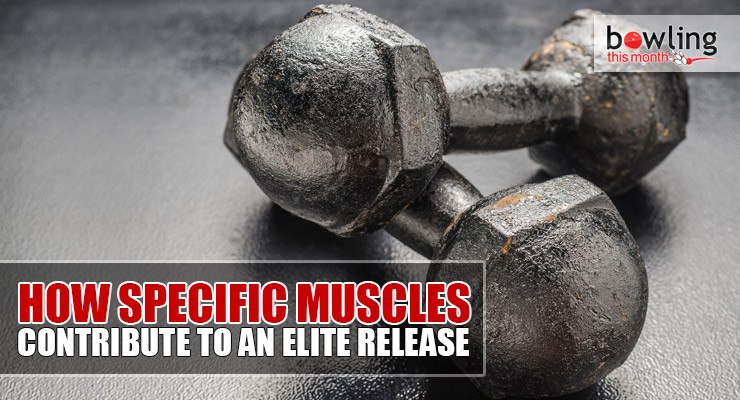Article Contents
- 1. What is wrist flexion?
- 2. What is wrist extension?
- 3. What is elbow extension?
- 4. The release
- 5. What happens if you have stronger biceps than triceps?
- 6. Wrist supports
- 7. Training at home
- 7.1. Wrist flexion training at home
- 7.2. Wrist extension training at home
- 7.3. Combined wrist training
- 7.4. Triceps training at home
- 8. Concluding remarks
Note: This article is only available to Bowling This Month subscribers.
Over the past five years, I have focused attention on understanding how specific muscles and joint movements contribute to energy production and the efficient transfer of this energy from bowler to ball. Through this focused research, the functions of an elite release are much clearer to me now than ever before. In this article, I will discuss the function of specific muscles and how they are used to achieve an elite release.
An elite release requires utilization of specific muscles in the forearm and arm. Understanding which muscles will help coaches and bowlers focus on training techniques that develop and improve the release. Since the release is dynamic in nature, world-class players utilize wrist flexors, wrist extensors and the triceps brachii from the top of the swing throughout the release and to the follow through.
From my experience, many bowlers have difficulty developing their release due to weaker muscles in the forearm and triceps. By developing these muscles, one can improve their release while ensuring injury prevention. Over time and with some hard work, you can improve your release by targeting the wrist flexors, wrist extensors, and triceps brachii muscles. The article concludes with links to videos of exercises which can be done at home to build these muscles.
What is wrist flexion?
Flexion, by definition, is bending in a manner which results in a reduction of the angle of a joint. Wrist flexion is achieved by moving the palm of the hand toward the forearm which decreases the angle of the wrist joint. Historically, the bowling community has used the colloquial term “cupping” to define this specific wrist movement. From my perspective, we in the bowling community who support bowling as a sport should strive to understand anatomy, physiology, and biomechanics and utilize its terminology correctly. As we increase in coaching professionalism, it is vital we use terminology consistent with sport science definitions of biomechanical movements and body parts.
Wrist flexion involves two major muscles in the forearm: the (1) flexor carpi radialis and the (2) flexor carpi ulnaris. These two muscles are highlighted in blue. According to ...
Already a premium member? Click here to log in.


 (Only
(Only 